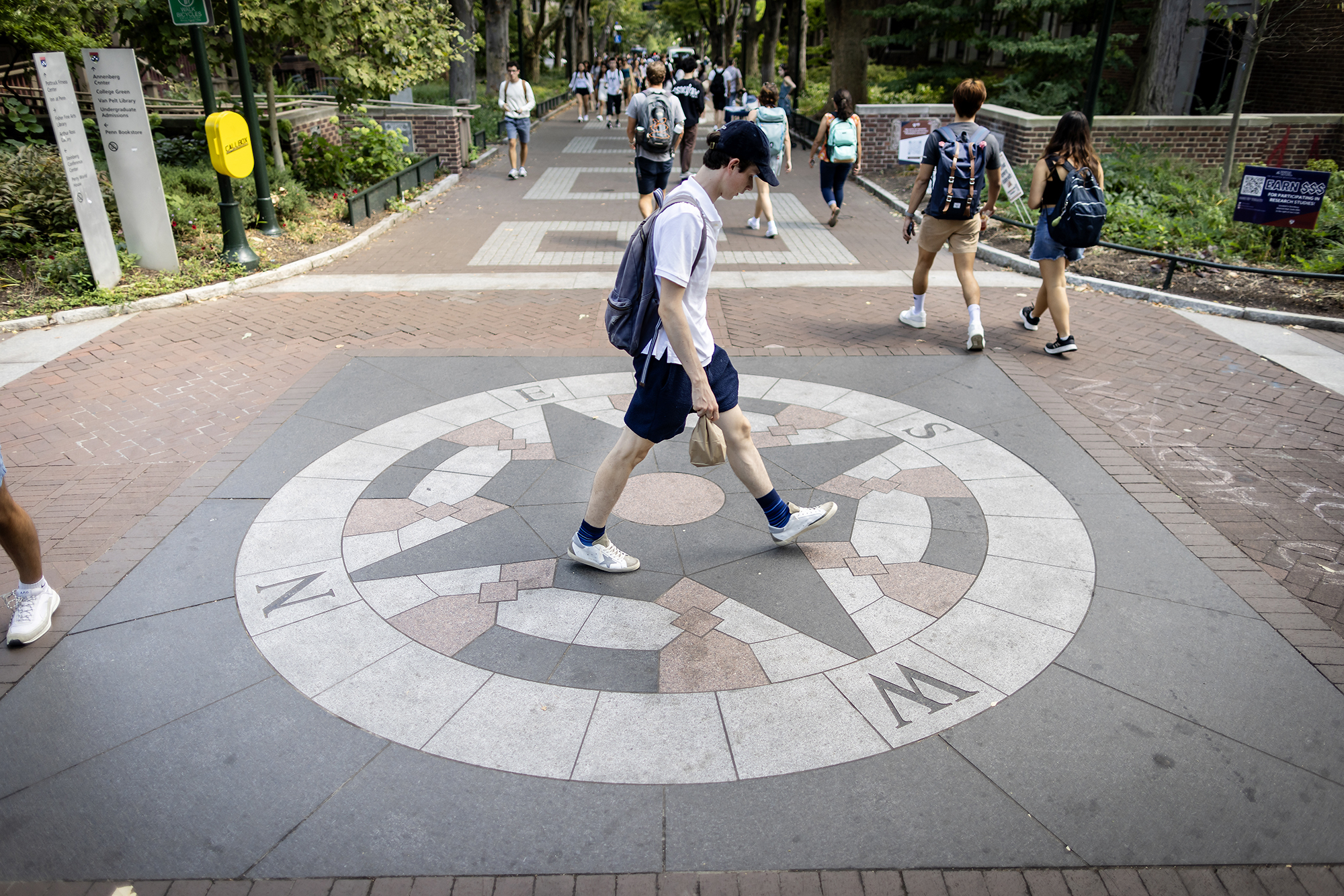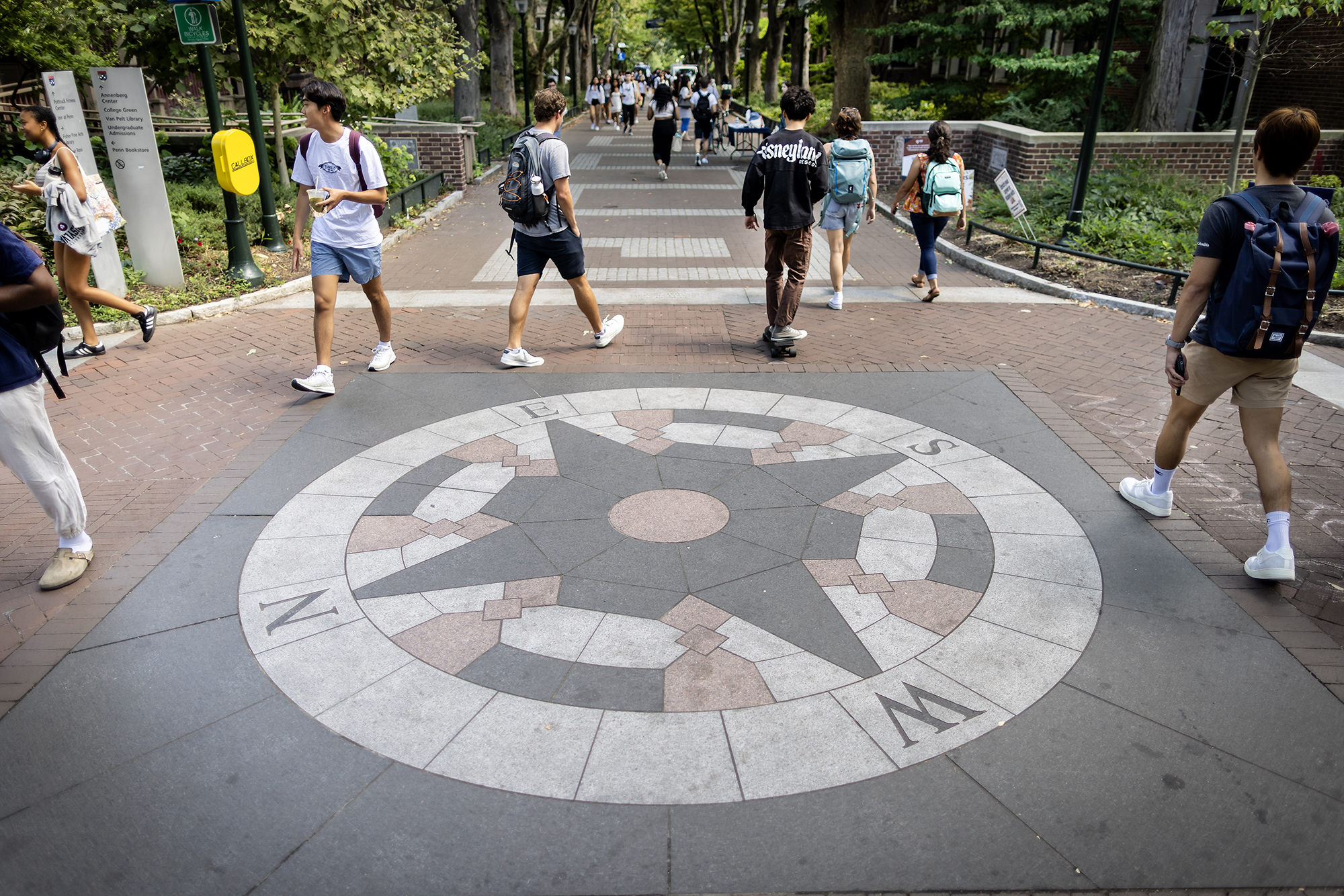- This is …

- It lives …
On Locust Walk at 37th Street. The idea for the inlaid granite compass came about in 1984 as part of a gift from several classes. “A number of ideas were bouncing around, including a rosette or a Penn shield. We then settled on the compass,” says Robert E. Lundgren, Penn’s landscape architect who designed the compass. “It shows how the University directionally lies in the city, going back to William Penn’s grid of north, south, east, west in the 1600s, making Philadelphia a little more navigable than some other big cities.”
- It’s cool because …
A legend arose from that stone compass, alleging that any student who stepped on it would fail midterm exams. Lundgren says he has no clue where the lore came from or when it started, but when he first heard about it around 2011 it gave him a chuckle. There are a lot of small stones with spaces in between them, and over the years several stones had cracked and been replaced. Lundgren wonders if perhaps the legend had to do with the cracks, like the old superstition about it being bad luck to step on cracks in the pavement. The compass was renovated in 2022, “and we’ve made it a bit sturdier,” he says.
For Lundgren, a landscape architect who loves nature and the outdoors, the compass is all about helping passersby be more aware of their surroundings when they are out in the world.
“It’s kind of cool that it ties you into a greater world outside your Penn bubble and gives a sense of your place in the city,” he says. “It’s a nice way to get anchored.”

Through
4/26







